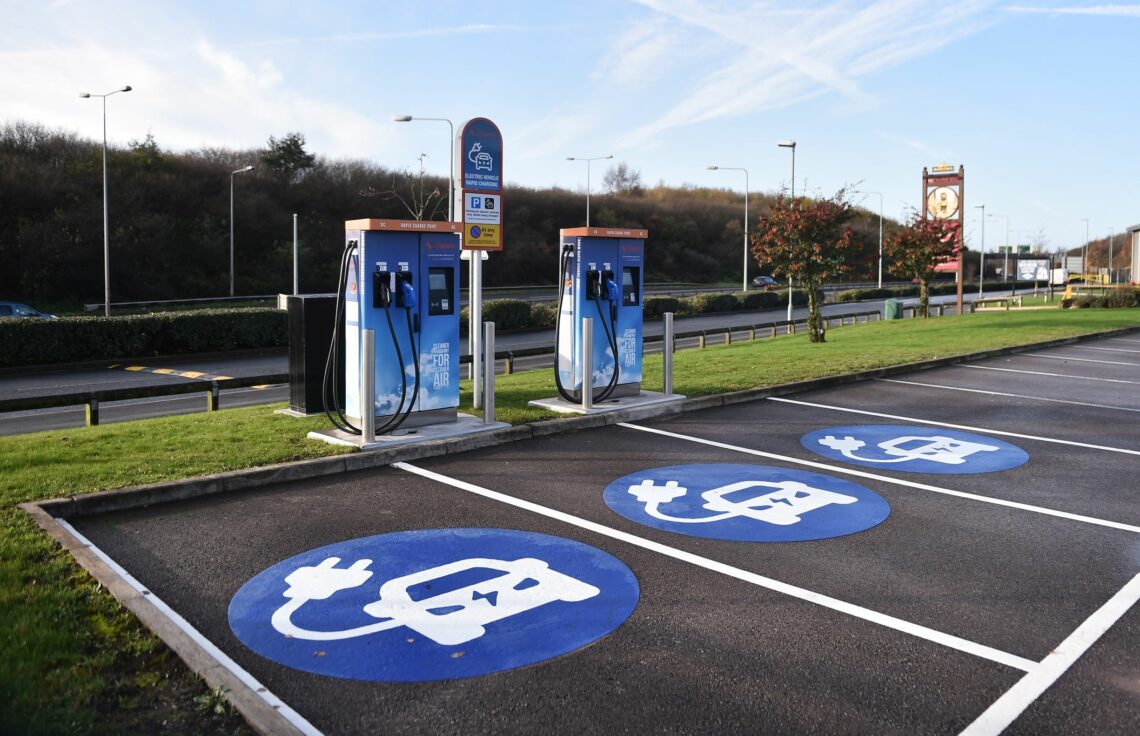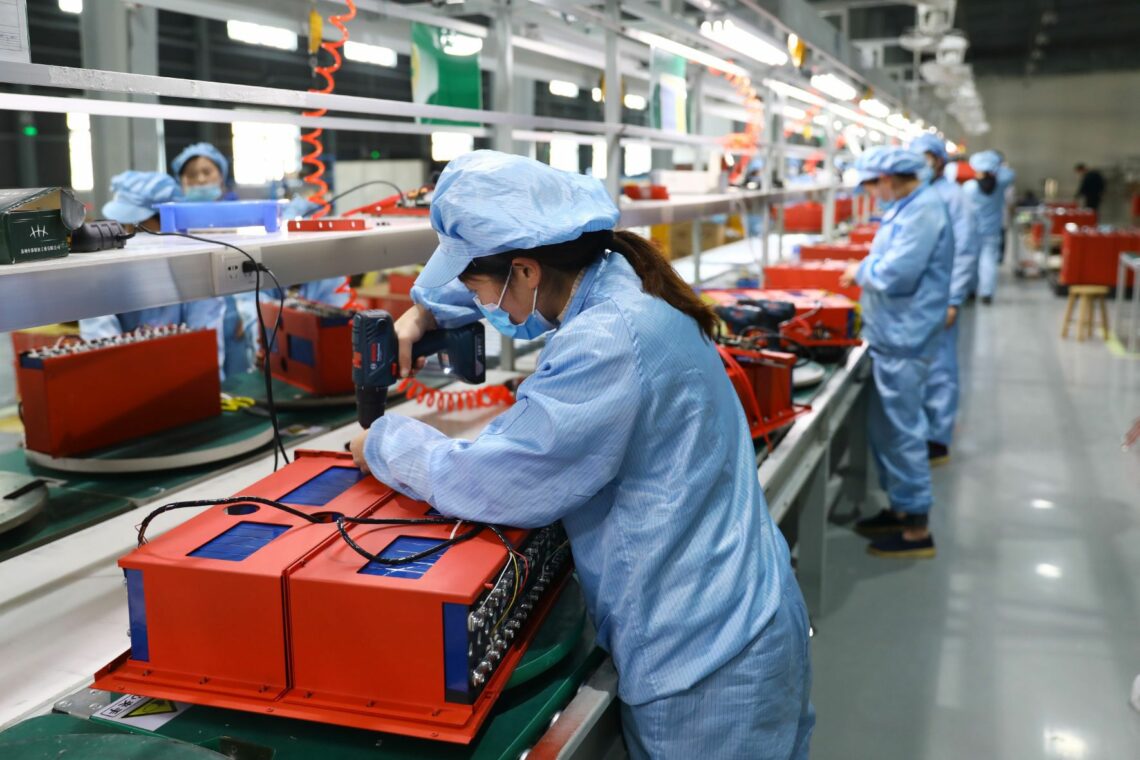The wrong turn on electric vehicles
For 45 years, governments have been pushing a transition from traditional cars to electric vehicles. Recently, this has taken the form of huge subsidies and smothering restrictions in the car industry. Yet several big problems in the making of electric cars remain.

In a nutshell
- Governments are pushing higher spending on electric vehicles
- Electric vehicles still present several big technological challenges
- Battery components are becoming a national security issue
There is no challenge that cannot be overcome by electric vehicles (EV), apparently. President Joe Biden and his global confreres are lavishing dollars, euros, yuan, and yen on plug-in schemes that they promise will avert a climate catastrophe, cure the Covid-enfeebled economy, decarbonize the power grid, engender energy independence, dispense environmental justice, revive organized labor and close the gender gap.
This latest surge of EV subsidies applies to purchases, manufacturing, infrastructure, and research and development (R&D). In most cases, the subsidies are accompanied by a regulatory crackdown on internal combustion fleets to reduce the cost advantages of conventional vehicles. Governments are also leveraging their purchasing power to boost EV sales. All of which, according to advocates, will hasten the tipping point at which EVs dominate automobility, transform the energy market and voila—avert global warming (and remedy all manner of social ills).
In reality, such a tipping point is many decades away, if it ever arrives. And it will only occur if numerous handicaps in current battery technology are overcome, including limited range, comparatively high costs and inadequate charging infrastructure. Rapidly scaling up battery production in response to sudden spikes in EV demand from government dictates also presents formidable challenges. Chief among these are China’s grip on the minerals in EV batteries and its dominance in battery manufacturing – priority elements in its five-year plans.
High hurdles
The purported benefits of going electric are, to put it politely, unrealistic – and not just because the concept of anthropogenic climate change is as shaky as a flat tire. Electric vehicles still comprise just 1 percent of the global car stock – half of which is in China. EVs also made up only 4 percent of 2020 new car sales in the United States, Europe and China combined – a sizable jump from 2018 but nowhere near enough to function as the disruptive technology that central planners claim it will soon become.
The demand shock of government EV policies will stress the supply chain of minerals for batteries.
Even if widespread adoption of EVs occurs, net reductions in so-called greenhouse gas emissions are far from assured. EVs do not emit carbon dioxide and equivalents, but these emissions will continue to be byproducts of the electricity generation necessary to propel the vehicles. Simply put, EVs are only as “clean” as the power that drives them. And that depends on the type of fuel used to generate the electricity – 64 percent of which is natural gas, coal or petroleum. Intermittent solar (2.1 percent) and wind (4.8 percent) will remain marginal sources unless and until experts master the technology necessary to store renewable energy for use on cloudy or windless days (and construct the supply chain for widespread, affordable distribution).
Political push
Pesky facts are not tempering politicians’ EV edicts. As the largest source of (so-called) greenhouse gas emissions, the transportation sector is a convenient target for politicians eager to avoid the exceedingly complex, costly and wholly dubious task of decarbonizing the planet. Within days of taking office, for example, President Biden pledged to replace the federal government’s fleet of 645,000 vehicles with “clean and zero-emission” models to facilitate “a carbon pollution-free electricity sector no later than 2035.” (Alas, Mr. Biden is demanding that the EVs be manufactured domestically with union labor, but neither Tesla, General Motors or Ford – which produce EVs in the United States – complies with the administration’s “Buy American” provisions.)
He has also committed to installing some 500,000 charging stations across the United States, and to institute more generous tax credits for EV purchases and factories. That the subsidies primarily benefit higher-income consumers does not seem to bother the administration, which has otherwise declared its dedication to “equity.” Meanwhile, regulators are preparing to tighten automotive fuel efficiency standards, which will increase sticker prices, thereby keeping a larger number of older, more polluting vehicles on the road.

Not to be outdone, the European Union stands committed to “net zero-emissions” by 2050 – recently adding an interim goal of a 55-percent reduction by 2030. But even with 2.9 billion euros in aid for EV projects, achieving those goals will be a daunting task – especially considering the global squeeze on battery supplies.
Asia, too, is setting aggressive EV targets. Notwithstanding large volumes of coal output, Chinese leader Xi Jinping has claimed that China will achieve net-zero emissions of carbon dioxide economy wide by 2060. That is a tad more conceivable than the declarations by other nations considering that 101 of the 136 lithium-ion battery plants in the pipeline (to 2029) are based in the country. China also manufacturers 73 percent of EV battery cells and holds four-fifths of the refining capacity for lithium-ion battery minerals, according to Benchmark Mineral Intelligence (BMI).
Battery ‘arms race’
The demand shock of government EV policies will certainly stress the supply chain of minerals for batteries, such as lithium, nickel, cobalt, graphite, aluminum and copper. (Absent government interference, a gradual shift in consumer preferences would allow for commensurate growth in mineral refining.) EV advocates say that recycling can overcome mineral scarcity – but there is no such network, at present (unlike the recycling of 99.5 percent of lead-acid batteries).
To the extent the United States and Europe push the EV agenda, some are seizing upon the supply of battery minerals and other components as an issue of national security. “We are in the midst of a global battery arms race,” says Simon Moores, BMI’s managing director.
The EU is using tariffs to establish domestic sources of battery components.
Herein is an object lesson in the drawbacks of government-induced market distortions. President Biden recently ordered Energy Secretary Jennifer Granholm to identify “risks” in the supply chain for high-capacity batteries and to submit policy recommendations to address them. Canada, too, recently created a federal-provincial-territorial “task team” to inventory the country’s “critical minerals” and build an “integrated, all-Canadian critical minerals and battery value chain.”
The EU is using tariffs to squeeze automakers to establish domestic sources of battery components. Under a deal brokered in December, the batteries installed in EVs by EU automakers can avoid stiff tariffs if they contain at least 30 percent of materials from sources inside the EU or the United Kingdom. Beginning in 2024, however, the domestic content threshold increases to 50 percent.
Long history
The current obsession with decarbonization is just the latest justification offered in the dogged 45-year push for EV adoption. Long before the global warming crusade took hold, EV subsidies were promoted as the antidote to the oil price spikes and gasoline shortages that culminated in the 1973 Arab Oil Embargo.
Intent on ending “U.S. dependence on foreign oil,” Congress overrode the veto of then-President Gerald R. Ford (1974-1977) to spend $160 million to produce 7,500 electric vehicles for government use. Mr. Ford’s misgivings remain as valid today as they were back then. He said: “It is well documented that technological breakthroughs in battery research are necessary before the electric vehicle can become a viable option. It is simply premature and wasteful for the Federal government to engage in a massive demonstration program – such as that intended by the bill – before the required improvements in batteries for such vehicles are developed. … I am not prepared to commit the Federal government to this type of a massive spending program which I believe private industry is best able to undertake.”
The lifting of the oil embargo in 1974 softened U.S. enthusiasm for EVs until the imposition of stricter air quality standards in 1990. Thereafter, fear of global warming fueled ever larger subsidies and grandiose schemes to reconfigure the global energy market.
Industry skepticism
Not everyone is optimistic about an EV revolution. Akio Toyoda, president of Toyota Motor Corporation and chair of the Japan Automobile Manufacturers Association, said he doubts that EVs will decarbonize Japan or any other nation. Shortly after Tokyo announced its intention to ban the sale of gasoline-powered automobiles by the mid-2030s, Toyoda predicted that the plan would increase electricity demand by 10 percent to 15 percent – equivalent to 10 nuclear reactors or 20 thermal power plants. “The more EVs we build, the worse carbon dioxide gets,” he said. “When politicians are out there saying, ‘Let’s get rid of all cars using gasoline,’ do they understand this?”
The more EVs we build, the worse carbon dioxide gets.
Even Tesla CEO Elon Musk has said that electricity consumption would likely double if EVs rule the road (and as our lifestyles become increasingly digital). That will require a massive expansion of nuclear, solar, geothermal and wind generation, he added.
Scenarios
In the near term, the most likely scenario – politicians’ aspirations notwithstanding – entails increased sales of electric vehicles and moderate gains in EVs’ share of the global car stock. (Assuming continuation of subsidies, that is.) Anything more significant would require dramatic breakthroughs in battery technology from which EVs gain parity with conventional vehicles in range and cost—breakthroughs that would undoubtedly occur in timely fashion if consumer preferences were driving the EV market. However, most nations will be unable to fulfill the preposterous decarbonization goals that their climate-obsessed politicians have set.
That could be a big win for taxpayers if it ended wasteful EV schemes. The more likely result, however, will be a doubling down on the subsidies and regulatory strictures that have kept EVs on life support for the past 45 years.
The most advantageous, though less likely scenario would be widespread recognition that the focus on electric vehicles – whether for energy “independence,” environmental improvement, or climate mitigation – has carried an enormous opportunity cost. Imposing a regulatory framework favoring electric vehicles and funneling billions of dollars into EV R&D has held back other types of innovation in the automotive and energy industries – including public health and environmental improvements. Likewise, the government’s preoccupation with reinventing energy markets consumes resources that would be far better invested by private individuals and the businesses that employ them.



